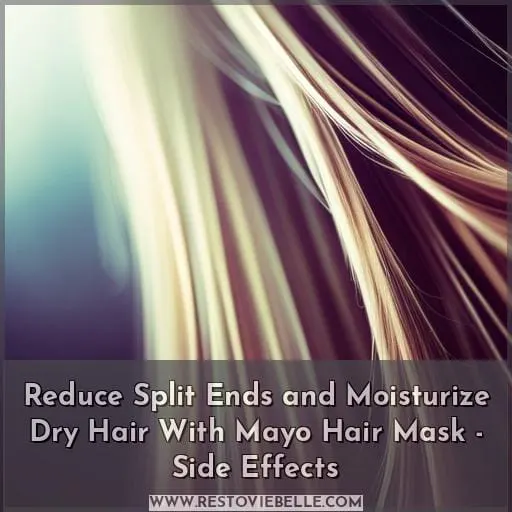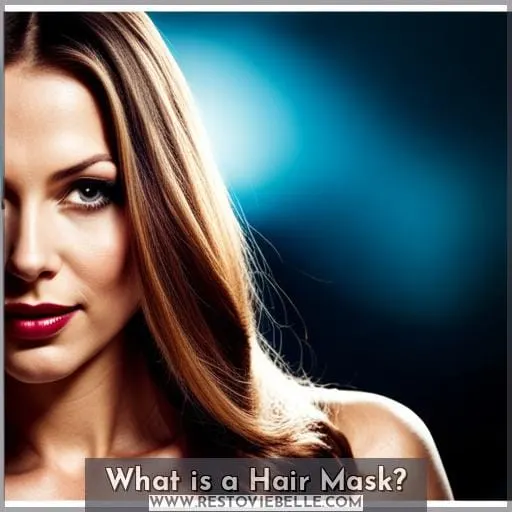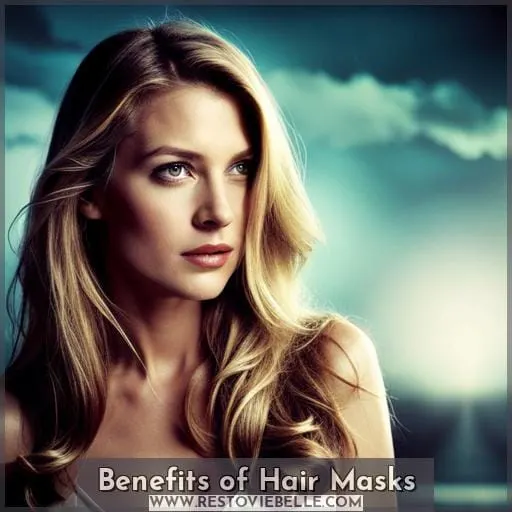This site is supported by our readers. We may earn a commission, at no cost to you, if you purchase through links.
 Try this homemade mayo hair mask for softer, shinier hair without the harsh chemicals. You’ll be amazed how a simple pantry staple can reduce split ends and moisturize dry, damaged hair.
Try this homemade mayo hair mask for softer, shinier hair without the harsh chemicals. You’ll be amazed how a simple pantry staple can reduce split ends and moisturize dry, damaged hair.
Here’s how to get the benefits without nasty side effects:
- Mix up a mask with just two ingredients – mayo and coconut oil. The eggs in mayo are packed with protein to strengthen strands.
- Massage this nourishing blend into damp hair before showering. The proteins bind to each surface strand to fill gaps and seal cuticles, while the fats provide moisture to hydrate dry, brittle hair.
- Rinse thoroughly after 15 minutes.
Your hair will feel silky smooth. Limit use to once a week, as too much can weigh down fine hair. But used properly, this frugal hair remedy makes an excellent at-home conditioning treatment.
Table Of Contents
Key Takeaways
- Do a patch test for sensitivity before using DIY mayonnaise hair masks to check for allergic reactions or irritation.
- Possible side effects include eye irritation, scalp irritation, and allergic reactions.
- There are risks of salmonella contamination from raw eggs in homemade mayonnaise masks.
- Consult a doctor if experiencing severe side effects like swelling, rash, or breathing issues after using a mayonnaise hair mask.
What is a Hair Mask?
A hair mask is a deep conditioning treatment that can help strengthen damaged hair and add hydration. Many store-bought and DIY versions use ingredients like oils, butters, honey and eggs to improve hair’s texture and shine.
Applying a hair mask weekly or bi-weekly and leaving it on for 15-30 minutes before rinsing out is beneficial for dry, frizzy or overprocessed hair. Look for formulas without harsh sulfates or fragrances if you have sensitive skin.
When making DIY hair masks, do a patch test first to check for irritation. Don’t keep any homemade mask too long before using it. Opt for well-researched recipes with quality oils like argan, coconut or olive oil.
Adding a few drops of lavender, rosemary or tea tree essential oils can provide added benefit.
Using a hair mask consistently alongside a gentle shampoo and conditioning routine can help achieve your hair goals with minimal risk of side effects.
Benefits of Hair Masks
You can help take care of your hair and improve its health by using hair masks. Regular use of hair masks containing moisturizing ingredients like oils, butters, and humectants can reduce split ends, add hydration to dry hair, and increase shine and softness.
The moisturizing ingredients infuse moisture, softness, and shine into dull, dry hair while helping to mend and prevent split ends. Hair masks with natural oils like coconut, olive, and argan are great for lubricating each strand and improving manageability.
Shea butter and other plant butters also provide fatty acids to smooth and soften hair. Humectants like honey, glycerin, and aloe vera attract and seal in moisture. Using a deep conditioning hair mask once or twice a week helps restore hydration and health to your locks.
Reduce Split Ends
Applying an avocado hair mask weekly helps seal in moisture and reduce split ends. Regular trimming is key to preventing split ends. However, heat styling and chemical treatments cause damage over time.
Making DIY masks with natural oils and butters provides intense conditioning between trims. Focus the mask on mid-lengths and ends. Let it sit for 30 minutes under a shower cap. Rinse thoroughly. Your hair will feel remarkably smoother. Continue this weekly to see a reduction in splits.
– Moisturize Dry Hair
A weekly coconut oil hair mask works wonders for quenching parched locks and leaving them silky smooth! Slather hair in virgin coconut oil and let it soak in for at least half an hour to deeply moisturize dry strands.
This natural DIY hair mask prevents breakage and provides intense hydration without skin irritation or unwanted effects. Regular deep conditioning with coconut oil keeps hair supple and shiny while promoting healthy growth.
Focus the oil on ends to reduce splitting. Limit heat styling and brush gently when wet to prevent damaging brittle hair.
– Improve Shine and Softness
Having moisturized locks feels amazing, doesn’t it? To improve the shine and softness of your hair:
- Use a mayonnaise hair mask once a week. The oils will boost shine.
- Allow the mayonnaise to sit for 30 minutes before rinsing. This provides deep conditioning.
- Concentrate the mayonnaise on your ends. They require the most nourishment.
- Combine honey or avocado with the mayonnaise. Their nutrients further soften hair.
Applying a mayonnaise mask nourishes your locks, leaving them glossy and supple. Your hair will appear healthy and feel wonderful.
Potential Side Effects
Applying mayonnaise or other oil-based hair masks may cause allergic reactions, eye irritation, or scalp irritation in some people. Carefully read ingredient lists and do a patch test before fully applying to reduce risks of adverse effects from certain oils or egg ingredients in some mayonnaise-based hair masks.
Allergic Reactions
Though uncommon, anaphylaxis can manifest. You should patch test hair masks first, as some ingredients may irritate sensitive skin or provoke allergies. Redness, rash, swelling, and breathing issues signal an anaphylactic reaction; promptly seek emergency care.
To be safe, know all ingredients, follow instructions carefully, and avoid masks with components you’re allergic to. With prudent precautions, you can likely enjoy masks’ benefits without adverse reactions.
Eye Irritation
You’d need extra caution around your eyes when using a mayonnaise hair mask. A heavy coating of mayonnaise could elevate your risk of contracting reddened skin, blurred vision, and eye injuries if it is allowed contact with delicate eye tissue.
Protect your eyes with careful application, eye protection, and prompt rinsing if any spillage occurs. Adhere to product directions and seek medical advice for severe reactions. Consider allergy testing beforehand and have antihistamines on hand.
Scalp Irritation
Tis wise to rinse promptly if the mask leaves your scalp feeling itchy or sensitive. Some hair mask ingredients may cause scalp irritation or allergic reactions in sensitive individuals.
- Do a patch test first.
- Follow instructions carefully.
- Avoid contact with eyes.
- Rinse thoroughly after the recommended time.
- Discontinue use if irritation occurs.
To soothe irritation, apply a cold compress or hydrocortisone cream. Check with your dermatologist if symptoms persist, as they can assess for allergies or scalp conditions.
Mayo Hair Mask Risks
When using a mayonnaise hair mask, be aware of potential risks. Contamination with Salmonella bacteria is possible if raw eggs are used, and those with egg allergies may experience adverse reactions. Individuals with egg allergies should avoid mayonnaise hair masks containing raw eggs to prevent adverse reactions.
Opting for pasteurized eggs or egg-free alternatives can help reduce the risk of Salmonella contamination. Proper handling and storage of ingredients is advised to further decrease the chances of bacterial growth.
While mayonnaise hair masks can provide conditioning benefits, weighing the potential risks is important, especially for those with egg allergies or sensitivities.
Salmonella Contamination
Salmonella contamination can foil your haircare goals. Using raw or spoiled eggs in homemade hair masks poses a salmonella risk. Eggs are common ingredients in DIY treatments, so bacterial contamination could spread to your hair and scalp when applied.
Salmonella from bad eggs can cause scalp itching, redness, and irritation. Severe cases may produce fever, diarrhea, and cramps if bacteria enter through scalp cuts.
To stay safe, use pasteurized eggs and discard expired ones. Properly store mask ingredients. Home recipes require vigilance to avoid contaminants that derail styling and scalp health.
Egg Allergies
Got to keep in mind egg allergies when using mayonnaise, as some folks can’t handle eggs. Allergic reactions to egg in mayo can range from mild skin rashes to severe anaphylaxis. Carefully read ingredient lists and avoid products containing eggs. For hair masks, you can substitute oils, yogurt, or silken tofu for the eggs.
When eating out, ask about egg ingredients and cross-contamination. There are good options to manage egg allergies safely. But know the risks of using egg-based ingredients, like mayo, for those with hypersensitivities.
Safe Usage Tips
Here are a couple key tips for staying safe when using a mayonnaise hair mask. First, always do a patch test on your arm to check for any allergic reactions before applying the mask to your hair and scalp.
It’s also critical to carefully follow the preparation and application instructions, such as ingredients, quantities, timing, and proper rinsing.
Patch Test
You’d be wise to do a patch test before slathering mayonnaise all over your head, lest you end up with a nasty rash that’ll have you running for the Benadryl. Apply a dab of mayonnaise on your inner arm and wait 24 hours to check for redness or swelling.
This simple test can prevent a widespread allergic reaction and spot skin sensitivities early. With patch test results, you’ll know if mayonnaise is safe for your hair or likely to cause side effects.
Follow Instructions
When using a hair mask, make sure you follow the directions exactly. If you have any concerns about potential side effects or allergies, talk to your doctor beforehand.
- Test a small area first.
- Note any irritation.
- Check for reactions over the next 48 hours.
By heeding the instructions, you can properly evaluate the mask’s effectiveness and minimize risks so your hair gets the full benefit.
Avoid Eyes
Ye’r makin’ sure the mayo mask don’t get in them pretty peepers of yours, savvy? Gotta protect them precious pearls. When applyin’ home hair treatments like mayonnaise masks, be mindful to avoid contact with eyes.
Professionals take precautions durin’ procedures too – like goggles with laser hair removal.
Protectin’ vision from chemicals or light energy prevents injury.
Don’t take chances with DIY beauty tricks or unlicensed laser devices. Your peepers be too precious, ya dig? Keep ’em safe so you can keep seein’ the beauty in this world.
| Steps to Protect Eyes | |
|---|---|
| Apply mask carefully around eyes | Avoid rubbing near eyes |
| Rinse immediately if product gets in eyes | Use damp cloth to gently wipe away |
| Visit doctor for eye irritation lasting >24 hrs | |
| Wear goggles during laser procedures | Never stare at laser beam |
| Allow only licensed professionals to perform laser treatments | Do not purchase home laser devices |
When to See a Doctor
The wise king looked at his royal mane in dismay, seeking a skilled healer’s sage advice on what was wrong with his once-lustrous crown. Avoiding expert guidance can make side effects worse. Seeing a doctor quickly gives clarity.
- Severe irritation like blistering, oozing, swelling
- Widespread redness, rash, itching lasting over 48 hours
- Hair loss in clumps, bald patches
Although DIY masks offer cheap care, some reactions need a doctor’s visit. Share what products you use, how often, and how you apply them. Describe when symptoms started, where they are, and how they have progressed. Bring packaging listing ingredients.
Take photos of your skin to help diagnosis. Expect the doctor to examine your hair, scalp and medical history. Be open about any recent changes. Follow treatment instructions completely. Watch out for product warnings.
Get emergency care for worrying, getting worse, or ongoing issues. Discuss prevention and management going forward. With care and attention, your mane can shine like it used to. Trust your healer.
Alternatives to Mayo Masks
Many people find mayonnaise hair masks leave hair feeling overly greasy. You can try avocado and coconut oil masks instead, which have the potential benefits of added hydration and nutrients for your hair follicles.
Coconut Oil
Y’all’s gentle coconut oil soothes the soul. Famed for moisturizing hair without harsh chemicals, coconut oil’s fatty acids penetrate deep to hydrate and repair.
Simply melt a few tablespoons and apply thoroughly to clean, damp hair. Let sit 30 minutes before rinsing out. Many find extra shine, silkiness, and less breakage. Its antioxidants may also help protect hair from damage while cleansing and conditioning.
Coconut oil’s versatility allows customizing hair masks with other nourishing ingredients like olive oil, avocado, honey, or egg for extra conditioning. Mix up your own luxurious, natural blend and see healthier hair emerge. Using coconut oil regularly could be the soothing, nourishing treatment hair’s been seeking.
Avocado
Y’all’d better slather some creamy avocado on your locks for a natural hair treatment without the side effects of that mayo mask.
Avocado hair benefits are many–it moisturizes, protects, and softens strands. Make a DIY avocado mask once a week by mashing up the fruit, adding honey, and applying to clean hair.
Avocado hair treatment feeds follicles with vitamins and fats while reducing frizz and split ends. Unlike mayo masks, avocado hair care avoids the unpleasant smell and risk of scalp irritation.
The rich oils penetrate without leaving hair greasy. For luscious, smooth locks, avocados are your best bet.
Conclusion
After bathing your locks in nourishing ingredients like egg yolks or avocado, you emerge from the shower with hair that shines like strands of pure gold. The mask has worked its magic, transforming your dry, damaged tresses into a flowing mane that would make Rapunzel envious.
Though the results seem miraculous, take care not to overindulge. Too much of a good thing can cause buildup or irritation.
With the right care, those splintered ends can be smoothed, and frizz replaced with sleek radiance.












